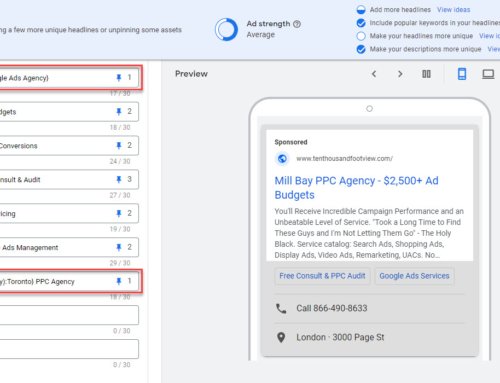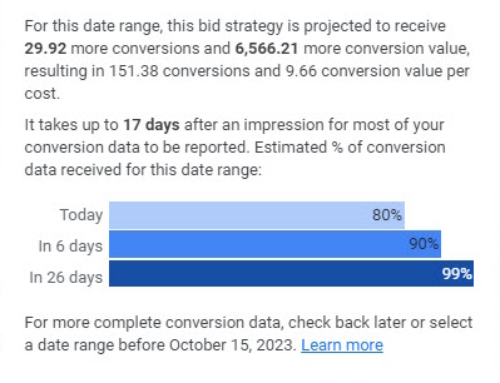In this continuing series for specific industries, I’m covering Google Ads for automotive products sellers in this post.
This includes companies that sell replacement or aftermarket products and equipment to consumers or businesses. As with the other niches I’m writing about, we have a solid presence in this market space.
DISCLOSURE: Some of the products mentioned in this post may contain affiliate links that at no additional cost to you, we may earn a small commission. Importantly, we only promote products that we use ourselves.
Before going any further, here are a few words about the scope and constraints of this post.
Scope & Constraints
The strategies and tactics outlined broadly apply to most advertisers selling automotive products online. However, every business is unique, so every Google Ads implementation needs to be as well. This article alone shouldn’t be the basis for building and optimizing your Google Ads campaigns. You should always work with an experienced Google Ads expert or take comprehensive training before making this type of investment.
Industry Description
The automotive industry is gargantuan. The post relates to companies that sell:
- OEM or aftermarket parts
- automotive accessories and upgrades
- vehicle cleaning and other supplies
- mechanic tools and equipment
- branded clothing and other items
Google Ads Eccentricities
In this section, I’ll cover some specific things you need to be aware of when running Google Ads for automotive product sales.
Resellers and Fixed Pricing
In the auto industry product resellers are often restricted by a fixed MSRP. This means there is no way to compete on price. Advertisers must focus on a stronger brand, superior creative, customer experience, and a higher-converting website to gain a competitive advantage.
Amazon and eBay
In most automotive niches you don’t only have to compete with other e-commerce sites, but often with Amazon and eBay too.
Performance-Max Campaigns
If your business is a true e-comm / online store, P-Max will be your most important campaign type. Generally, you should be spending north of 90% of your total budget on P-Max Shopping Ads.
As with any shopping campaign effort, first, ensure that your product feed is clean and complete. This includes product titles, descriptions, GTINs, Google product category (taxonomy), segmentation by product_type, brand, use of custom labels as appropriate for sale items, top sellers, and so on.
Note that titles should include the brand, model, and a concise part/product description.
Use of Merchant Center promotion and product review features is mandatory here to gain an edge over your competition.
In terms of asset groups, consider running one for each of your main product lines. But don’t go nuts here, just split them up enough to justify running different search/display/video ads for each group. Feel free to break up P-Max into separate campaigns if your profit margins are substantially different for various product categories. Try to minimize the number of campaigns, though, by grouping similar profit margin items into the same campaign with an appropriate tROAS.
Most importantly, consider the big picture, i.e. client lifetime value. If you expect a lot of repeat business you should include the cost of initial client acquisition when calculating your tROAS. Failure to do so will result in restrictive spending and an inability to scale.
Here are other articles I’ve written with detailed best practices for Performance-Max and Merchant Center build and optimization.
Lastly, if you’re brand new to Google Advertising, you should consider starting with Standard Shopping. Run this for 3-4 months until you are able to achieve a healthy return and clean up most of the irrelevant search queries with negatives. With that done you can migrate to P-Max and ask your Google rep to add all those negative keywords to that campaign. While you can also add negatives globally to your account, there is a 1,000 keyword limit which isn’t that many in the grand scheme of things.
Search Campaigns
Online Stores
If, as above, you have an online store, search ads shouldn’t represent a huge part of your Google ad spend. Focus on running branded search and consider testing your best sellers as well as popular competitor brands once you’re making a good return with P-Max.
Ensure that as soon as you can, you are running conversion value-based automated bidding. This will ensure you’re optimizing bidding for return.
If you are mainly interested in lead generation, search should make up the majority of your ad spend, perhaps as much as 70-80%. P-Max can certainly be a great companion campaign, but shouldn’t be the main focus.
Other Business Types – Lead Generation
For lead generation, it’s great to run value-based bidding, if and only if you can are able to set the variable value per lead or upload offline conversions. You can refer to this article for more information on that. Otherwise, focus on conversion volume, with either Max Conversions or tCPA bidding.
In terms of search campaign structure, you should be running branded, topical search, and possibly competitor brands. Topical search is your bread and butter and your main way to bring in new business.
Always keep keyword themes tight and start with phrase-match keywords. Once you’re hitting your numbers you can start to scale your budget and experiment with broad match. But keep in mind that automotive products are an astoundingly large market. Google will tend to easily go astray running your ads for irrelevant search queries. Keep a close eye on your search terms report and keep up with negatives including:
- dissimilar products, e.g. searches for incompatible car makes and models
- competing brands that lead to a high CPA or low ROAS
- generic high-funnel searches, until you’re campaign has matured a lot
- your own brand in a topical campaign
Creatives
As with any campaign, ensure you fully utilize your ad copy slots, images, vidoes, and so on depending on the ad type. In addition, add all applicable assets (formally called ad extensions). If you are a reseller with many competitors ensure that you use differentiators for your store, since product features and benefits will be identical for the product. Perhaps you’re the only store offering a full money-back guarantee or free international shipping… these things can make a big difference when the product and price are the same.
One other thing to do to stand out in this situation is to use slightly different language to describe similar features. When there are 4-5 almost identical ads and your’s is a bit different you are more likely to get the click.
Lastly, you need to constantly work on optimizing creatives to eek out every ounce of potential performance. This includes tweaking individual ads as well as testing at scale using ad variations.
Remarketing Campaigns
In this niche, you have to think carefully about your remarketing strategy. For example, if you sell a product that’s required for a DIY repair, you will probably have a short window to sell if your prospect needs to get their car back on the road. If, on the other hand, you’re selling an expensive product for performance improvement, you may have a few months of lead time before they make a buying decision.
With this in mind you should segment your remarketing audiences into different groups based on date range and test them to see what works best. From there you can refine targeting, eliminating audiences that aren’t cost effective.
If you’re running traditional remarketing ads I would opt for Demand Gen instead of standard display ads. The combination of higher quality Google inventory placements and ability to include video ads will set you up for success.
If you are running P-Max shopping ads you should lean heavily on dynamic remarketing. This is, of course, fully automated.. you simply have to activate the program in Merchant Center and ensure that your website is properly tagged with product IDs. If you’re not sure whether this is working correctly you can check “your data sources” under the audience manager tool.
One quick reminder… if you’re mainly focused on lead gen you should create a list of converted users and exclude them from targeting.
Other Campaign Types
If you have a large enough account budget (around $50K/month+) you may want to run video, discovery, and display separately from P-Max. Just keep in mind that while you will gain better insights and more campaign control, you might find that overall performance dips. These campaigns should be geared more towards pure branding and influencing decision-making goals, don’t measure success by CPA or ROAS!
Campaign Optimization Notes
The automotive products niche tends to be more sensitive to seasonality and sales like Black Friday and Cyber Monday. Consider using countdown insertion for your sales along with promotions and budgetary adjustments. If you need to make large adjustments I recommend leveraging the seasonality tool.
Also ensure that you’ve uploaded your customer list to enable customer match. This can inform Google what your ideal customers look like and boost overall campaign performance.
Tools and Other Tips
In my experience, most successful e-comms run highly optimized stores that address up and cross-selling, cart abandonment, and have amazing email/text remarketing programs. If you’re in the process of building a new store or looking to upgrade I strongly recommend Shopify as it’s the most robust and scalable solution around. As for other tools it can be worthwhile to invest in Klaviyo to manage email/text channels.
If, on the other hand, you’re mainly focused on lead generation, you have a plethora of great options for your website and landing pages. It would be a good idea to do some landing page split testing with something like Unbounce. Also, I recommend CallRail to capture inbound phone call conversions and/or to simplify implementing value-based bidding.
Summary
Selling automotive products through Google Ads has some unique challenges, particularly when you cannot compete on price and don’t offer a unique product. Even when you have full control over pricing and a distinctive offering, competition can be fierce.
Success often hinges on finding the best compromise between healthy profit margins and new client acquisition.
Importantly, ensure that you’re using all available Google Ads features and other tools to optimize optimize optimize your campaigns!






